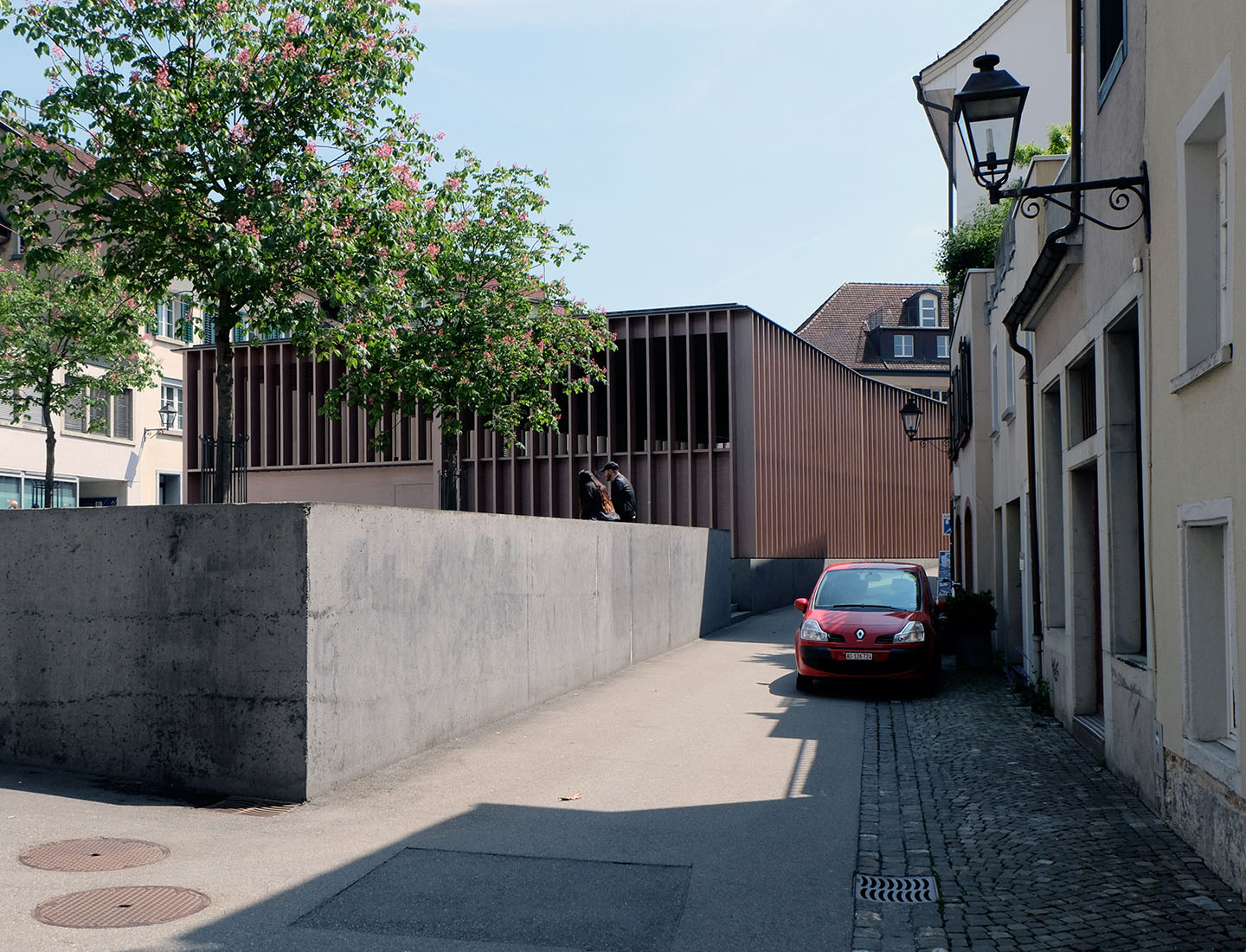 |
 |
 |
 |


Market Hall
Färberplatz, Aarau
1996 - 2002
This Market Hall, designed by Miller & Maranta, is located on the Färberplatz in the city Aarau. The strange shape of the Färberplatz is the result of
its historic location between a supposed surrounding wall and the second ring wall from the period around 1330. The quarter, connected by its own arm of the city of creek,
never truly belonged to the city center, but was interspersed with gardens and economic structures. In 1982/83 the existing buildings were demolished,
and a city festival brought the square back into public consciousness. In 1996 the competition for the market hall was carried out, and won by Miller & Maranta.
The function of the building is not adequately described by the term Market Hall. The building should provide a space for different usages available to the public.
With its kinked shape, the building continuously influences the perception of the urban space. At times the volume lets the views pass unhindered,
other times it blocks the views hard. In the frontal view, the building has a hard and strong character, in the tangential direction of view it gets dematerialized.
When the large gates are open the building dissolves almost completely. The building fills the available space confidently, only narrow alleys are left
as gaps to the envolving buildings. Remembering the mediterranean and the medieval town, the feeling of security in tightness is juxtaposed to the generosity of the wide places.
These two spatial types are staged coherently. The square at the front is paved and creates an urban openness, while on the rear side a horizontal platform with trees,
benches and a retaining wall was realized, giving intimate appearance and a feeling of security.
The timber construction presents itself as a counterpart to the stone facades of the surrounding town houses, which are mainly from the 18th century.
It is both an allusion to the preexisting original wooden buildings at this site, and on the other hand this juxtaposition pronounces the presence of
the city made of stone. The market hall can be regarded in itself as a constructive masterstroke. The framework of the pegged and glued or grooved
wooden structure with dovetail connections is posed on a concrete substructure. This framework consists of an immense pillar, standing in the centre of the room,
and four beams, radiating in a distorted cross and supported on the exterior. From the two longitudinal sides angular lamellar elements are leaned against
this primary structure. This extremely delicate elements support the roof of the market hall. At the narrow sides similar elements are visible, but with a reduced
structural function. The individual lamellas are fanned out in relation to the segments of the plan. It results a homogeneous ceiling layout in the "warped" interior.
Each lamella is fitted at a different angle to the whole thing and therefore has different dimensions and joints. A construction method which was only made
possible by current technology (CNC). The construction is stiffend by storey-high plates bonded to the construction on the interior. These plates also serve
as a protection from wind for the interior. Each element assumes a crucial role in the static structure. The whole structure is coated with a copper-colored pigmented oil stain,
which gives a metallic shimmer to the building and alienates the material.